#nobuo hara
Photo


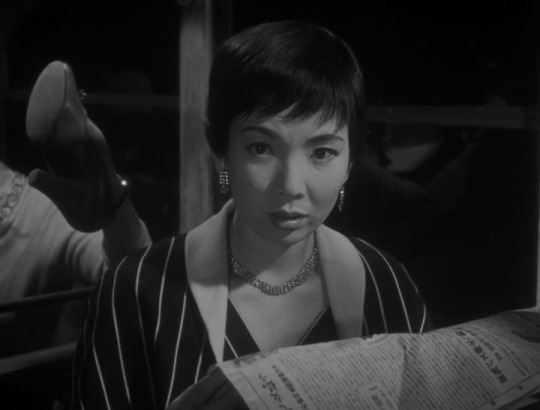
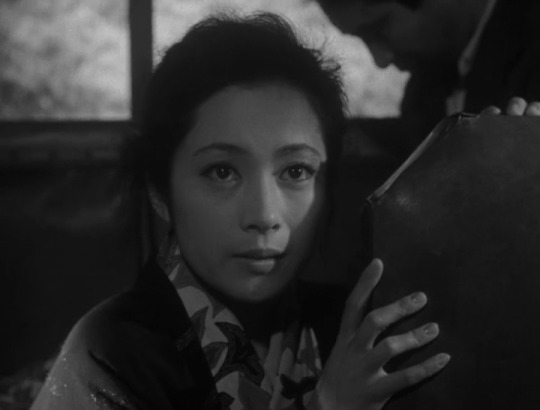

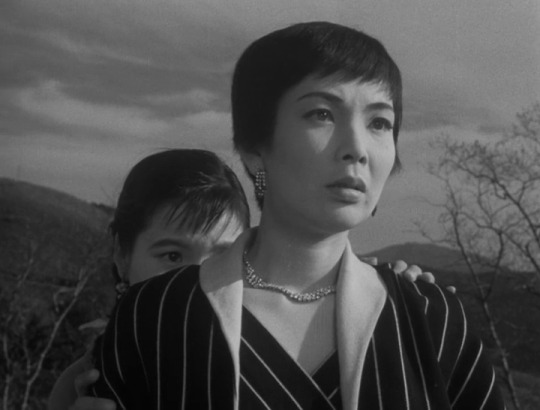

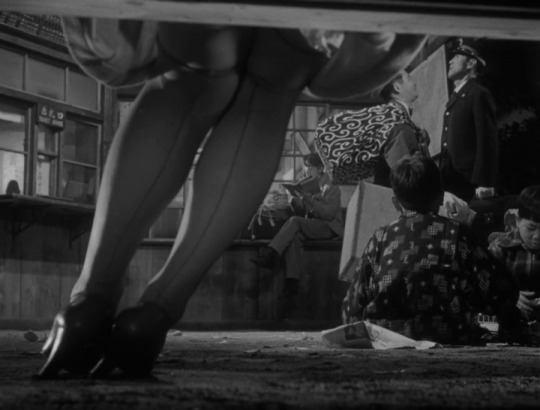
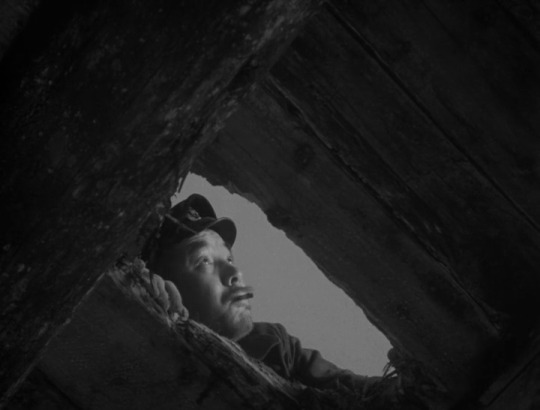
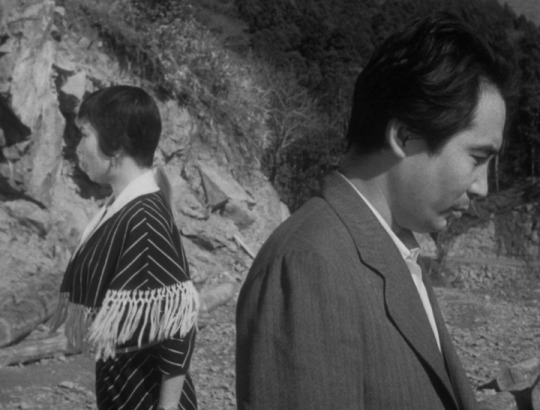
Eight Hours of Terror (Seijun Suzuki, 1957)
#films watched in 2023#Eight Hours of Terror#Seijun Suzuki#Suzuki#1957#seis#black and white#Hachijikan no kyôfu#Hachijikan no kyofu#Taizô Fukami#Hisako Hara#Nobuo Kaneko#Minako Katsuki#intrigue#thriller#legs#robbery
85 notes
·
View notes
Text

Yoko Tsukasa, Setsuko Hara, Ryuji Kita, Shin Saburi, and Nobuo Nakamura in Late Autumn (Yasujiro Ozu, 1960)
Cast: Setsuko Hara, Yoko Tsukasa, Mariko Okada, Shin Saburi, Nobuo Nakamura, Ryuji Kita, Keiji Sada, Chishu Ryu. Screenplay: Kogo Noda, Yasujiro Ozu, based on a novel by Ton Satomi. Cinematography: Yuharu Atsuta. Production design: Tomiji Shimizu. Film editing: Yoshiyasu Hamamura. Music: Takanobu Saito.
It's possible to think of 1960 as a kind of watershed year in Japanese film, with the appearance of two such radically different films as Nagisa Oshima's The Sun's Burial and Yasujiro Ozu's Late Autumn. The contrast between the lurid chaos of Oshima's underworld and the strict geometry (of both style and morals) of Ozu's middle classes couldn't be sharper. I imagine some alien intelligence on a distant planet intercepting transmissions of both films and wondering that they could possibly come from the same world, let alone the same country (and even the same film studio, Shochiku). Ozu was of course an established master, whereas Oshima was beginning a career -- with a bang, it should be said, making three feature films that year. The razzle-dazzle of The Sun's Burial was long behind Ozu, if it was ever really in his cinematic vocabulary. But both films speak to the restless undercurrents in Japanese postwar society, Oshima's by confronting the disorder and corruption, Ozu's by slyly examining the breakup of stifling traditions in the Japanese family. Both end with solitary women, the gangster-prostitute Hanako in The Sun's Burial and the empty-nest mother Akiko (Setsuko Hara) in Late Autumn, confronting loneliness. But if Hanako has a counterpart in Ozu's film, it's really the feisty Yuriko (Mariko Okada), the representative of the younger generation who sorts out all the tangled threads that the meddling older generation has gotten snared in. At this point I feel the comparisons getting strained, but it's always fun to let differing films sort themselves out.
2 notes
·
View notes
Text
REPLICA PLAYLIST
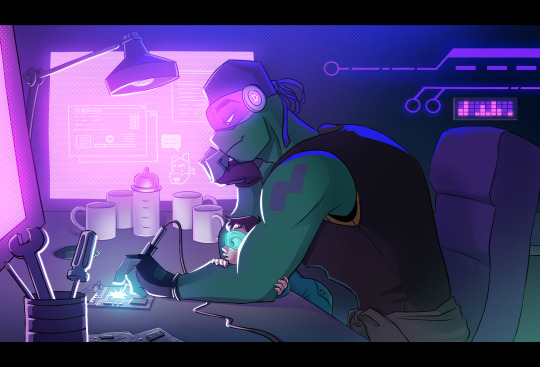
MUSIC UNDER CUT
I have been receiving requests for any songs that inspired Replica, so here, have my personal playlist. Sorry it’s not Spotify/Soundcloud but they don’t have some of these songs available so uh… guess you’re stuck with YouTube vids. For fun I'll include my personal titles for them (which might give a few hints of what to expect in the future/end).
Replica Main Theme - “Die for You” by Grabbitz
Like Father Like Son Like Brother (Omega and Shelldon) - "As Above So Below" by Alistair Lindsay
Mikey's Theme / The 1st Vision - "Suzume no Tojimari" by Nanoka Hara
Military (Mad) Dogs / Central Park Colony - "Imperium" by Madeon
Shanghai - "Icarus" by Madeon
Boom Goes the Donnie-mite (Mikey/Donnie vs the Sweeper) - "The Red Zone" by Mitsuoto Suzuki
The Day the Sky Bled Red - "7 Seconds Till the End" by Nobuo Uematsu
Going Out Like a Boss (Raph and Leo) - "Agape" by Nicholas Britell
Remembering the Right Way (Mikey and Leo) - "The Souls of Many" - by Alistair Lindsay
Mystic Hands / The 2nd Vision - "Am I Dreaming" by Metro Boomin x A$AP
Book 2 Trailer - "Sea Dragon" by Covet
7 Years Later - "Iron" by Woodkid
Leo's Theme / Attack on the Labor Camp - "Ego Death" by Polyphia
Omega's Theme - "Touch" by Daft Punk
Flat Lines (Omega Alone) - "Die Toteninsel Emptiness" by 1000 Eyes
Spear - "Monsters" by Tommee Profitt
Final Protocol - "The Kraken" by Katie Dey
Rise / Epilogue - "Close in the Distance" by Masayoshi Soken & Tom Mills
I will admit, it's a little embarrassing since you can easily see the patterns of what I've been listening to for the past year or two. I swear I listen to more than just videogame OSTs, these songs just jive well with the story and I often find lyrics distracting when brainstorming scenes. Regardless, the music I listen to is such an important part of my creative process and some of these songs really defined the scenes I now have locked in my head. So I figured it was only fair to give them the credit they're due.
I will continue to add to this playlist, and will note in comic updates when one of these songs is applicable!
#lofi Donnie anyone?#also sort of celebration for 19k followers wow#should I do something else for it?#I particularly like Leo's theme being titled Ego Death#very fitting#Also the final song makes me cry because the lyrics are just too dang perfect#I'd like to do an animatic with the song when this story is all done#check out the lyrics if you get the chance#in fact I'd like to do an animatic trailer for the Book 2 Teaser#we'll see though#i can't allow myself to get too distracted from the comic itself haha#replica#rottmnt replica#kathaynesart#playlist#music#spoilers? but like... you know how it ends in the movie so not really?#kind of?#did you see the rise movie?#then you’ve been spoiled sorry#posting again at an ungodly hour#I am tired#save rottmnt#rottmnt#TMNT#Donatello#casey jones
4K notes
·
View notes
Text
VA - J Jazz Vol. 4: Deep Modern Jazz from Japan - Nippon Columbia 1968 -1981 - a new entry in BBE Music's excellent comp series
With J Jazz volume 4, the BBE J Jazz Bullet Train continues its journey traversing the expansive landscape of modern Japanese jazz. Volume 4 is the latest in the universally praised compilation series exploring the best, rarest and most innovative jazz to emerge from the Far East. Please take your seats for a first-class ticket to J Jazz central.
This latest station stop off is with the famed Nippon Columbia label, one of the biggest labels in Japan, whose jazz output embraces every possible style imaginable. Focussing on the key years 1968-1981, J Jazz volume 4 sees compilers Tony Higgins and Mike Peden dig even deeper into their record collections and pull-out tracks that span styles ranging from solo to big band, jazz classical interpretations and heavy jazz rock, to febrile post-bop, white hot samba fusion, and modal psychedelic wig-outs.
J Jazz volume 4 features icons such as drum master Takeo Moriyama, keyboard magi Hiromasa Suzuki, Fumio Itabashi, and Masahiko Satoh, and guitar wizards Kazumi Watanabe and Kiyoshi Sugimoto, alongside big band maestros and innovators Nobuo Hara and his Sharps and Flats, and Toshiyuki Miyama’s New Herd. Thunderous basslines nestle alongside glistening runs of electric piano, bubbling synths and air-tight drumming as the heavy psychedelic modal blues of Jiro Inagaki flows with the infectious samba grooves of Takashi Mizuhashi featuring Herbie Hancock; Shigeharu Mukai’s fusion funk epics take the music to another level and Mikio Masuda’s driving keyboard rhythms brings the heat to an incendiary dancefloor zone.
With 7,000 words of extensive sleeve notes, J Jazz vol 4 comes in a triple 180g vinyl set inside a deluxe gatefold sleeve with obi strip plus a 4 page insert. The double CD features two bonus tracks not on the vinyl edition. Mastered at the Grammy-nominated Carvery Studio by Frank Merritt, this latest collection is a worthy successor to the preceding three volumes that have set the bar so high.
J Jazz is curated for BBE Music by Tony Higgins and Mike Peden.
14 notes
·
View notes
Text


The YASHA CD Drama, Stage 1; A Long-Awaited Arrival To Our Arsenal
The first thing my beloved collaborator, @toichinagae, told me about when they reached out to me was the existence of the YASHA CD drama. I was very intrigued, as I'd never heard of it before. I knew of the TV drama, in fact I'd archived it a month or so beforehand, but I never knew that there was a CD drama that not only followed the manga more closely, but also featured some anime voice actors that I NEVER would've expected to work on it!
There are two CDs, this post will be focusing on the first one, referred to as "Stage One." This CD was released on March 24th, 2000, and produced by Pioneer LDC(Currently known as NBCUniversal Entertainment Japan.). This drama's screenplay was written by Asami Watanabe(I could not find any information about them online, it seems there is a key animator by the same name, I am unsure as to if they are the same person.), with music by Nobuo Ito.(Once more, there is very little information about them online.)
The cast list, as sent to me by @toichinagae via email, is as follows(I added some notes on notable characters each voice actor has played, just because I find it interesting.):
有末 静:石川 英郎 Arisue Sei: Hideo Ishikawa(You may know him from Doukyuusei, where he played Hara-sen.)
雨宮 :辻谷 耕史 Amamiya Rin: Koji Tsujitani
有末 比佐子: 井上 喜久子 Hisako Arisue: Kikuko Inoue(You may know her from Kiki's Delivery Service, wherein she played Maki.)
雨宮 協一郎:梁田 清之 Kyoichiro Amamiya: Kiyoyuki Yanada(You may know him from Perfect Blue, wherein he played Kantoku
永江 茂市:松本 保典 Nagae Moichi: Matsumoto Yasunori(You may know him from Sk8 the Infinity, wherein he played Joe.)
永江 十市: 野島 健児 Toichi Nagae: Kenji Nojima(You may know him from Banana Fish, he voiced Eiji.)
三上 尊:子安 武人 Takeru Mikami: Takehito Koyasu(You probably know him from somewhere, I personally know him from Jojo's Bizzare Adventure as DIO, and Adam from Sk8 the Infinity.)
ケン・クロサキ: 古澤 徹 Ken Kurosaki: Toru Furusawa(You may know him from the '98 Trigun anime, wherein he played Millions Knives.)
ライアン博士 池田 勝 Dr. Ryan: Masaru Ikeda
ホッジス少佐:中 博史 Major Hodges: Hiroshi Naka(You may know him from Cowboy Bebop, where he plays Jobim.)
伊東 泰之:飛田 展男 Yasuyuki Ito: Nobuo Tobita (Unclear on who exactly this character is. This va was in Darling In The Franxx, but I don't think he had a notable role there.)
有末 静 (12才): 山田 美穂 Sei Arisue (12 years old): Miho Yamada(..She seems to have done work for a number of projects that are not appropriate for this blog. More power to her.)
(*Note Toichi's voice at 12 years old is currently unknown.)
These CDs are currently untranslated, but you can find the .wav files for both in this drive folder.
I intend on creating youtube uploads for each track, for ease of use to potential translators and general accessibility for people who's devices cannot run .wav's(..if any exist lol.)
More to come soon!!
4 notes
·
View notes
Text
Nobuo Hara & His Sharps & Flats – # &♭ Plays Latin Rock [Full Album] (1970)
youtube
1 note
·
View note
Photo

Nobuo Hara and His Sharps & Flats Soul
ソウルを求めて-モダン・ジャズ三人の会
原信夫とシャープス・アンド・フラッツ
Solid Records
#Nobuo Hara and His Sharps & Flats#原信夫とシャープス・アンド・フラッツ#nobuo hara#原信夫#soul#ソウルを求めて#モダン・ジャズ三人の会#anamon#古本屋あなもん#あなもん#disc jacket#cd jacket#cover art
14 notes
·
View notes
Text
Chiemi Eri and 1950s Japanese Jazz - Phantom Dancer 27 Sept 2022
Chiemi Eri and 1950s Japanese Jazz – Phantom Dancer 27 Sept 2022
Chiemi Eri was a Japanese actor and singer of folk songs and jazz. She is this week’s Phantom Dancer feature artist, on which she even sings a Turkish folk song.
Japanese Jazz TV from 1960 with vocal duo, The Peanut Sisters…
The Phantom Dancer is your weekly non-stop mix of swing and jazz from live 1920s-60s radio and TV every week.
LISTEN to this week’s Phantom Dancer mix (online after 2pm…
View On WordPress
#2ser#airchecks#band remotes#Chiemi Eri#count basie#greg poppleton#japanese jazz#jazz#nobuo hara#old radio shows#old time radio#radio#swing#sydney
0 notes
Audio

Nobuo Hara and Sharps & Flats - Take Five (Yupiteru Records)
wrt. Paul Desmond, 1978. - - - - - - - - - - > see Versions Page.
12 notes
·
View notes
Text







The Return of Godzilla (Koji Hashimoto, 1984)
Cast: Keiju Kobayashi, Ken Tanaka, Yasuko Sawaguchi, Shin Takuma, Yosuke Natsuki, Taketoshi Naito, Eitaro Ozawa, Nobuo Kaneko, Takeshi Kato, Mizuno Suzuki. Screenplay: Hideichi Nagahara, Tomoyuki Tanaka. Cinematography: Kazutami Hara. Production design: Akira Sakuragi, Mutsumi Toyoshima. Film editing: Yoshitami Kuroiwa. Music: Reijiro Koroku.
9 notes
·
View notes
Photo


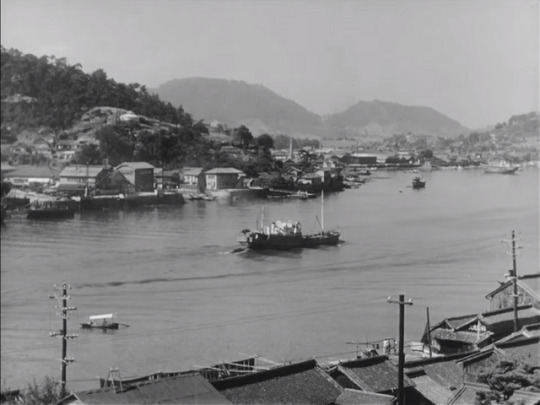
Tokyo Story (東京物語 Tōkyō Monogatari) (1953)
Dir: Yasujirō Ozu
DOP: Yūharu Atsuta
“Children don't live up to their parents' expectations. Let's just be happy that they're better than most.”
#tokyo story#東京物語#tokyo monogatari#yasujiro ozu#kogo noda#chishu ryu#chieko higashiyama#setsuko hara#haruko sugimura#so yamamura#kuniko miyake#kyoko kagawa#eijiro tono#nobuo nakamura#elderly#reitred#family#couple#children#aging#age#old age#selfishness#mortality#japan#japanese#tokyo#social realism#drama#film
19 notes
·
View notes
Audio
Kiyoshi Yamaya, Toshiko Yonekawa, Kifu Mitsuhashi - Wamono Groove: Shakuhachi & Koto Jazz Funk ’76 - new entry in 180g’s Wamono Series
Following the already classic Wamono A to Z trilogy, we are delighted to present an exceptional collection of jazz funk / rare groove tunes recorded in the mid-seventies at the Nippon Columbia studios by three giants of Japanese music: arranger Kiyoshi Yamaya, koto legend Toshiko Yonekawa and shakuhachi master Kifu Mitsuhashi.
Born in 1932 in Tokyo, Kiyoshi Yamaya started his musical career in 1953 when he played in various jazz bands in town. In 1957, Yamaya joined Nobuo Hara’s famous jazz big band Sharps & Flats as a baritone saxophone player and started composing, arranging, and recording for them and other big bands. He became a key jazz figure in Japan in the sixties together with Norio Maeda and Keitaro Miho, both jazz pianists, composers and arrangers, by forming the Modern Jazz Three Association – which aimed at improving the level of Japanese jazz composition and arrangement. In the mid-seventies, his Contemporary Sound Orchestra explored jazz funk fusions with traditional Japanese melodies and instruments such as the shakuhachi, koto, biwa, and shamisen. These works were recorded for a series of panoramic Japanese albums released domestically on Denon and Nippon Columbia, from which the tracks on this compilation are taken from.
Toshiko Yonekawa, born 1913 in the city of Himeji, not so far from Osaka, is the eldest daughter of koto and shamisen master Kin’o Yonekawa. She started studying both instruments with her talented father from the age of 3, played in her first concert at 8, and was only 12 years old when she first appeared on national radio. Her unique style of koto playing is widely recognized due to the extreme accuracy of the intonation and rhythm, as well as the unequaled beauty of the instrument’s sonority. After a life decorated with awards and prizes, Toshiko Yonekawa was named a Living National Treasure in 1996.
Born in Tokyo in 1950, Kifu Mitsuhashi is a great master of Koto style shakuhachi. After completing the NHK Hōgaku Training Program in 1972, Mitsuhashi became a member of Pro Musica Nipponia, a group of leading composers and top-ranking musicians devoted to performing a wide-ranging repertoire of classical and contemporary compositions from both Japan and the West – in which all music is performed by traditional Japanese musical instruments. Mitsuhashi has toured the world for hundreds of recitals, also as a soloist, and has performed his art with the greatest ensembles such as the BBC Symphony Orchestra and the Berliner Philharmoniker. In 2020, Kifu Mitsuhashi was awarded the Order of the Rising Sun.
14 notes
·
View notes
Photo

Tokyo Twilight (1957, Japan)
I haven’t been a classic movie fan for as long as some fellow amateur writers on movies, and I've only been delving into older live-action Japanese films within the last ten years. Having only made Akira Kurosawa’s acquaintance in 2010 and Kenji Mizoguchi’s after that, my first viewing of a Yasujirô Ozu film was in 2012, with his Early Spring (1956) – the work that preceded the subject of this write-up, Tokyo Twilight. A half-decade later to that introduction to Ozu, I am beginning to realize – like the plays of Shakespeare, the animated movies of Walt Disney Animation Studios and Studio Ghibli, the symphonies of Beethoven, and any other continuum of challenging, worthwhile art – that it will take me a lifetime to become familiar with Ozu’s movies. Bar any unforeseen developments in my health, there is plenty of time to do so.
For on the surface, the director’s works are filled with the tatami shots and pillow shots that I have written about numerous times on this blog. Beyond that, Ozu’s humanity, the intricacies of mundane human life, and his attention to individuals between moments of catharsis or tragedy reflect a philosopher-artist fully in control of the artform he specializes in.
Tokyo Twilight is considered Ozu’s darkest film, and it’s certainly the darkest Ozu film I have yet to see – it is not recommended for those who never seen an Ozu movie before. This darkness is based not in what the film depicts – remember, Ozu never shows the most traumatic moments (Chieko Higashiyama’s character dies off-screen in 1953′s Tokyo Story) or even a character’s greatest celebrations or victories (the buildup to Setsuko Hara’s wedding in 1949′s Late Spring is essential to that film’s plot, but the wedding itself is skipped over) – but how it impacts the characters we come to know intimately and make us care for them. Tokyo Twilight, with that apt title, would be Ozu’s final film in black-and-white.
Banker and single father Shukichi Sugiyama (Chishû Ryû) is looking forward to spending time with his eldest daughter, Takako (Setsuko Hara), as she is returning home from the aftermath of an unhappy, perhaps abusive, marriage. Takako is also bringing home her young daughter, who is just learning how to walk. Youngest daughter Akiko (Ineko Arima) is learning English shorthand and she, too, is having significant other troubles with Kenji (Masami Taura). One evening while searching for Kenji, Akiko stumbles upon a mahjong parlor owner named Kisako (Isuzu Yamada), who claims to have been an old neighbor of the Sugiyamas many years ago. Even for a neighbor, Kisako seems to know more about the Sugiyama family than she should, instantly making Akiko suspicious. In Tokyo Twilight’s second half, the two most important subplots emerge: the identity of Kisako is deduced by Takako and Akiko becoming pregnant thanks to a boyfriend who could not care less.
Ozu, considered one of the greatest of filmmakers and one-third of the trinity of great Japanese directors (alongside Kurosawa and Mizoguchi) and sometimes framed as unassailable by his less critical supporters, addresses one of his storytelling weaknesses with co-screenwriter Kôgo Noda. That weakness: Ozu has always excelled in crafting stories from the viewpoints of elders or parental figures, not so much their children. And when those children are as young as those found in I Was Born, But... (1932) or Record of a Tenement Gentleman (1947), Ozu’s depiction of children – though well-meaning, and sufficiently funny when needed to be in his comedies – never adopts their perspective, but frames their experiences through the behaviors and expectations of the adults in the movie. Having seen only one teenager as a central character in an Ozu film (Miyuki Kuwano in 1958′s Equinox Flower), my sampling size is too small to draw any conclusions – but I can’t imagine Ozu and Noda were any better with depicting teenagers. Hara and Yamada are playing young women here and, unusually in Ozu’s earlier post-silent era movies, Tokyo Twilight centralizes their fears, desires, joys, and disappointments for the plot – not that this marginalizes the father’s concerns.
Akiko and Takako are not content to care for their father alone, but to assert their independence. Takako, as the oldest, is not the stereotypically submissive woman so often found in Japanese narratives, and will not tolerate her husband’s inebriation and boorish behavior. We don’t know whether Takako married her husband out of love or some other means, but so often in Japanese cinema one would expect the battered wife to stick it out or openly fight with him. Takako knows better than to bother. Streaks of independence are even more pronounced with Akiko, who is more Westernized and enjoys being a rebel without a cause (this characterization might be the most problematic, as Ozu and Noda refuse to look into why Akiko might be acting this way – instead, Ozu and Noda prefer to have Mr. Sugiyama wallow in self-pity and express his sadness about how he raised his daughters). Among the adult daughters that appear in Ozu’s films, Akiko might be the least trusting, least reliant, and most manipulative towards her parent and other elders.
And yet despite their attempts to escape from the traditional trappings of marriage, the Confucian-influenced relationships between children and parents, or both, Akiko and Takako find the past to be inescapable. In conjunction with Yuuharu Atsuta’s pillow shots – unlike previous Ozu movies – are kept to confined spaces inside buildings or at the end of cluttered walkways. Gone are the expansive shots of a morning or afternoon sky, the flowing windswept grasses of a hillside or a berm leading up to train tracks. Instead of those relaxed pillow shots, Tokyo Twilight features pillow shots including the uncertainty that comes with darkness (almost all of the pillow shots appear during nightfall, let alone twilight), the confining angles of the home and other familiar buildings. The past, before and after those pillow shots, is built over years by the “little white lies” that parents tell their children. Perhaps the lies that your parents told you are not as serious as those eventually revealed by Tokyo Twilight’s conclusion. But at its essence, Tokyo Twilight is a piece depicting the last vestiges of childhood innocence (maintained by parental prevarication) stripped away, and how damaging that can be.
Tokyo Twilight is the most plot-centric of the Ozu-Noda collaborations. With multiple plot twists – to even have one plot twist in an Ozu movie is uncommon – and verbal conflict more visceral than usual, this is not the placid meditation that longtime Ozu fans who have never seen Tokyo Twilight before might expect this film to be. It is, oftentimes bitter, disillusioned. The two women of Tokyo Twilight are suffering from a lack of love demonstrated by their partners and the adults – persnickety and gossiping – surrounding them. Such developments are unsustainable for any human being after years of misdirections and separations. Maybe someday Akiko and Takako will accept the indiscretions of their father, their elders, and their friends as the behavior of men and women unable to imagine life in any other way. Maybe someday Akiko and Takako may find the room to forgive those who did not love them as much as they should have. But that will not happen in Tokyo Twilight or immediately after the movie’s defining tragedy – which, in true Ozu fashion, is never shown, only talked about and reacted to.
Twenty-five years old when the film was released, Ineko Arima (Equinox Flower, 1959′s The Human Condition I: No Greater Love) almost never smiles for the 140-minute runtime. For a Japanese movie, in this specific modern culture where women smiling is an uncodified tradition, that is unthinkable. Arima gives the performance of the movie, reflecting an emotional and motivational emptiness that might have been glossed over by Setsuko Hara’s smile in any other Ozu movie. To maintain that disposition for the length of the film and to earn the audience’s empathy is an enormous undertaking, and the young actress has outdone herself here. Despite a history of Ozu and Noda underwriting or refusing to give the adult children the focus of the story, Arima capitalizes on the rich writing offered to her from the screenwriters here.
This would be the third-to-last film Setsuko Hara would make with Ozu, with almost a decade’s worth of stunning performances under his direction. Tokyo Twilight marked the end of Hara, in an Ozu movie, playing a daughter of Chishû Ryû’s that other characters think should have been married long ago. Playing the older sister (possibly because, approaching forty years of age, Hara could not plausibly play the unmarried daughter to Japanese audiences any longer), the character of Takako is one of the least obedient characters Hara played in an Ozu film. The trademark smile is there, though offset quite often with her behavior towards Isuzu Yamada’s character. it is not the most memorable Hara performance, but this would not be the last time Hara would play an older sister character. If Hara had continued her career after Ozu’s death, performances like Tokyo Twilight might instead be used an example of Hara’s versatility rather than a deviation from typical Hara roles.
The veteran Ryû –who appeared in fifty-two of Ozu’s fifty-four films (including Ozu’s seventeen lost and partially surviving films) – is sometimes unreadable in Tokyo Twilight, but this plays to the film’s characterizations. It is an assured performance drawing deep from his acting experience. As Mr. Sugiyama, reserved and exhausted amid post-War change, Ryû disassociates himself with the personal details and trivialities of others unless it is somehow related to his family’s welfare. Social change and the outside world do not seem to bother him, and he is just willing to cast his fate to the winds of that change without knowing where those winds might take him. The traumas of Japanese militarization – how it estranged Mr. Sugiyama from his family and Japanese society at-large – are omnipresent. This is Ryû playing a sort of victim; a victim who unwittingly contributes, in part, to his family’s ultimate despair.
Japanese audiences, expecting a ponderous familial drama of smaller incidents rooted in a greater wisdom, responded poorly to Tokyo Twilight upon the film’s release. Over time – at least among Western audiences and cinephiles – Tokyo Twilight has burnished its reputation as one of Ozu’s most ambitious movies, embracing plotting in ways that the director had not done so since the 1930s.
I have read from certain film critics that some of the greatest movies can help change how one conducts their life or views the act of living for the better. For me, the Ozu films that I have seen – as a whole, not any one in particular as of yet – have helped shape how I view relationships familial, platonic (not so much romantic). By how much? Ask me in another five years of watching Ozu movies and I might have a more definite answer for you. Because like I've written above, Ozu and Noda are best at writing through the eyes of adults, not their adult children. Nevertheless, these films, in their own ways, still have their appeals even to adult children.
My rating: 10/10
^ Based on my personal imdb rating. Tokyo Twilight is the one hundred and forty-second film I have rated a ten on imdb.
#Tokyo Twilight#Yasujiro Ozu#Ineko Arima#Setsuko Hara#Chishu Ryu#Isuzu Yamada#Haruko Sugimura#Nobuo Nakamura#Masami Taura#Kogo Noda#Yuuharu Atsuta#TCM#My Movie Odyssey
1 note
·
View note
Video
youtube
From my 78rpm record collection.
"夢見るあの人"
唄:江利チエミ
演奏:原信夫とシャープス・アンド・フラッツ
編曲:村山芳男 昭和29年録音
"THE MAN UPSTAIRS"
Chiemi Eri with Nobuo Hara & Sharps And Flats
arr.by Yoshio Murayama
recorded in 1954
原信夫とシャープス・アンド・フラッツ 向井 周、工藤正人(as) 原信夫、森剛康(ts) 森川周三、河本豊弘、光井 章(tp) 西村喜次、林一夫、白須正喜(tb) 舟木明行(b) 脇野光司(g) 佐藤愛子(p) エディ岩田(ds)
2 notes
·
View notes
Photo

Various - J Jazz: Deep Modern Jazz From Japan 1969-1983 (Vol. 2)
A1 Makoto Terashita Meets Harold Land - Dragon Dance 12:35
A2 Kosuke Mine Quintet - Daguri 6:19
B1 Mabumi Yamaguchi Quartet - Distant Thunder 10:33
B2 Hideto Sasaki - Sekine Toshiyuki Quartet + 1 - Stop Over 9:20
C1 Miyasaka + 5 - Animals Garden 10:27
C2 George Kawaguchi The Big 4 - Vietnam 4:33
C3 Hiroshi Matsumoto / Hideo Ichikawa Quartet - Serenade To A Dimly Lit Street 5:05
D1 Electro Keyboard Orchestra - Mother Of The Future 4:05
D2 Teru Sakamoto Trio - Teru-Teru Bozu (Black Keys) 6:16
D3 Toshiyuki Miyama & The New Herd With Masahiko Sato - Fallout 9:45
E1 Makoto Terashita - Dai Hosaku (Great Harvest) 11:27
E2 Takashi Miyasaka Quintet - Straight Road 8:27
F1 Nobuo Hara And Sharps & Flats - Little Giant 6:35
F2 Akira Miyazawa - Brown Trout 11:48
Genre: Jazz
Style:
1 note
·
View note
Photo
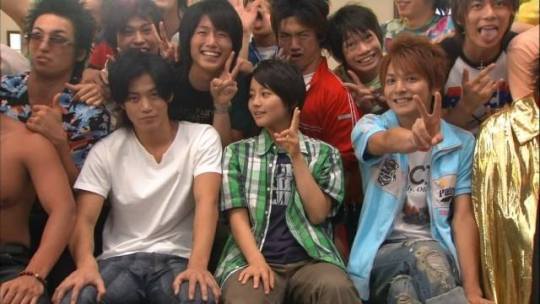
Hanazakari no kimitachi e # Bloc Technique Titre original : 花ざかりの君たちへ, Hanazakari no kimitachi e Autres titres : hana kimi, parmis eux Genre : comédie, lycée, amour, amitié Auteur : Nakojo Hisaya dans le manga hana kimi ou parmis eux (dispo en france) Réalisation : Matsuda Shigeruchi, Tsuzuki Junichi, Sato Genta Pays d’origine : Japon Chaine de diffusion : Fuji Television Nombre de saisons : 1 Nombre d’épisodes : 12 épisodes un SP une emission Durée : 54 minutes Date de diffusion : 3 juillet 2007 – 18 septembre 2007 (2008 pour le SP) Site Web officiel : Musique : Opening : Ikenai Taiyou – Orange Range; Ending : Peach – Ai Ōtsuka # Mon Synopsis Ashiya Mizuki , une jeune japonaise de 16 ans vit avec ses parents aux USA. Quand elle apprend que Sano Izumi, un champion de saut en hauteur dont elle est réellement fan ne sautera plus, elle fuit au Japon pour integrer le même lycée que lui afin de le remotiver. Seulement le lycée en question est un lycée pour monsieur… Mais bon, ça ne va pas la déranger !!! Puisqu’elle va se travestir en gars et se faire passer pour tel… Et au final, elle va partager la chambre de son idole et vivre une vie de lycéen pas tout a fait normal… Oui, dans ce lycée, ça ne se passe pas vraiment normalement :/ Trois dortoirs s’affrontent pour avoir des privilèges……. Ce qui n’aidera pas Ashiya a garder son secret… Et surtout pas Nakatsu Shuichi qui va commencer a développer des sentiments…. # Mon Avis Un triangle amoureuuuuuuuuuuuuuuuuuuuuuuuuuuuuuuuux !!!!!!!!!!!!!!!!!!!!! \o/ Bon l’histoire est pas bien compliquée mais au final y’a pas mal de rebondissements, d’humour… Les personnages sont attachants et amusants. L’ambiance est délirantes, des petites touches d’effets spéciaux augmentent cette touche humour :p j’ai pas lu le manga donc je peux pas trop dire si c’est mieux ou pas mais je me suis vraiment amusée a suivre cette histoire…. Les combats entre dortoirs donnent des défis bien marrant :p Je le conseille a tous quoi !!!! A j’ajoute qu’il y a très peu de filles dans ce drama !!! plaisir pour les yeux les filles :p # Avis d’Hikari Trop délire Hana Kimi!! XD Je regarde pas souvent les dramas (plutôt « au passage » quand mes soeurs visionnent) mais celui-là j’ai bien aimé. L’histoire paraît simplette comme ça mais c’est tellement drôle XD En plus j’adore l’actrice, elle joue super bien (La première fois je l’avait vu dans le rôle de Nobuta, le gros changement avec Mizuki! Oo) # Distribution Principaux Maki Horikita – Ashiya Mizuki Shun Oguri – Sano Izumi Tôma Ikuta – Nakatsu Shuichi Dortoir 1 Yuma Ishigaki : Tennouji Megumi, leader du dortoir 1 Mitsuomi Takahashi – Daikokucho Mitsuomi Kouhei Takeda – Kitahanada Kouhei Ryohei Suzuki – Akashi Souichiro Yuuichi Sato – Tetsukayama Shota Ryo Hayakawa – Gotenzan Sakyo Kouji Matsushita – Shojaku Ren Sousuke Nishiyama – Shichido Souma Tatsuya Hagiwara – Ishikiri Hiroto Dortoir 2 Maki Horikita : Mizuki Ashiya Shun Oguri – Sano Izumi Tôma Ikuta – Nakatsu Shuich Mizushima Hiro – Nanba Minami, leader du dortoir 2 Ryo Kimura – Senri Nakao Okada Masaki – Sekime Kyogo Yusuke Yamamoto – Kayashima Taiki Shunji Igarashi – Noe Shinji Junpei Mizobata – Saga Kazuma Hiromi Sakimoto – Kyobashi Shota Chiyo – Yodoyabashi Taichi Ryo Tajima – Ranzan Jyo Enoku Shimegi – Tannowa Kyoichi Hikaru Okada – Takaida Mutsumi Jun Ikeda – Kamishinjo Itsuki Keisuke Shibazaki – Minase Manato Dortoir 3 Nobuo Kyou – Himejima Masao Oscar,leader du dortoir n3 Keisuke Kato – Yao Hikaru Toshihiko Watanabe – Imamiya Noboru Yuta Takahashi – Shijyo Haruki Shouichi Matsuda – Kuzuha Junnosuke Naoki Miyata – Saiin Tsukasa Yasuhisa Furuhara – Ogimachi Taiyou Naoya Ojima – Kaizuka Kouhei Kouta Suzuki – Uenoshiba Souta Yuuya Nakata – Katahiranotsuji Ken Hiroshi Kawakami – Korien Genji Hibari Four Mayuko Iwasa – Hanayashiki Hibari Madoka Matsuda – Kishizato Juri Mirei Kiritani – Amagasaki Kanna Manami Kurose – Imaike Komari Airi Taira – Abeno Erika Personnel du lycée Takaya Kamikawa : Umeda Hokuto, médecin du lycée Seiko Matsuda – Tsubaki, principale du lycée Susumu Kobayashi – Yoshioka Takashi Ukaji – Sawatari, secrétaire de la principale Autres Mahiru Konno – Hara Akiha Yuu Shirota – Kagurazaka Makoto Yoshinori Okada – Ashiya Shizuki Shunsuke Daito – Sano Shin Tags : #drama #Hanazakari_no_kimitachi_e #hana_kimi #parmis_eux #comédie #lycée #amour #amitié #Nakojo_Hisaya #Matsuda_Shigeruchi #Tsuzuki_Junichi #Sato_Genta #Fuji_Television Lien vers la fiche : http://bit.ly/2tg3JOW http://bit.ly/2GfWpeZ
4 notes
·
View notes